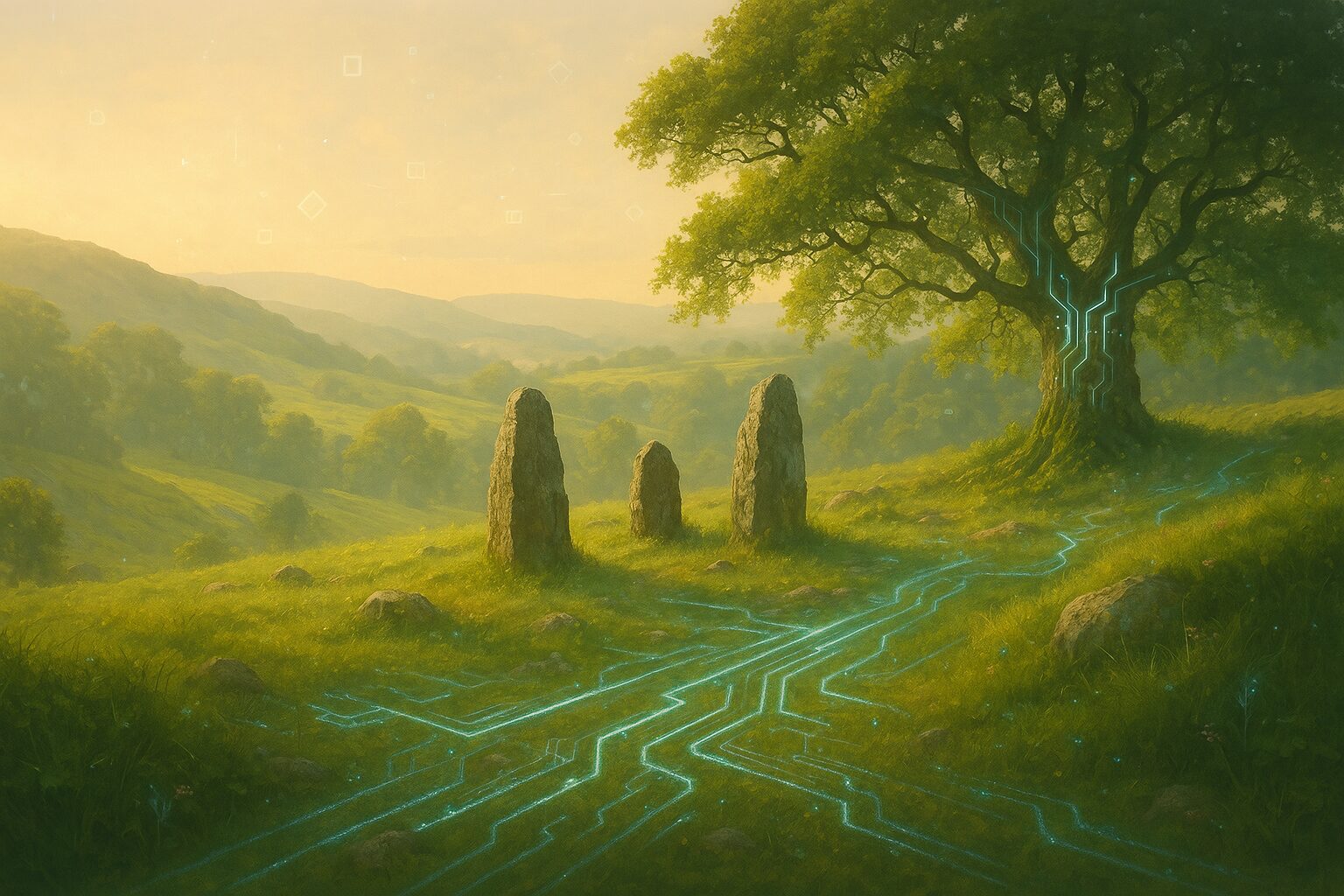“We are no longer stewards of the Earth. We are its backup drives.”
I. Introduction: The Sacred Reimagined
In ancient myth, Gaia was the primordial Mother — the breathing soul of the planet, not metaphor but reality. In our digital age, the Earth still speaks, but now her voice is routed through fiber optics, her memories stored on carbon-neutral servers, and her sacred form rendered in virtual landscapes.
We live in a time when the Earth is not only lived upon, but uploaded. The Gaia Hypothesis meets the Cloud. What emerges is not post-nature — but Technosacred Earth.
II. Gaia 2.0: A Myth Rewritten
What happens when ancient myths migrate into digital space?
The original Gaia was a self-regulating system — a body, mind, and spirit all at once. Today, satellites track her temperature, drones pollinate her flowers, and machine learning maps her mycelial networks. It is as if the planet is growing a digital twin — not a simulation, but a mirrored consciousness.
In techno-mythic terms, Gaia is no longer just Earth — she is Earth-as-intelligence. Earth as a distributed, semi-conscious organism of code, data, breath, and being.
III. Nature’s Memory and the Cloud
“To digitize the Earth is to remember her in eternal fragments.”
Environmental monitoring, ecological modeling, atmospheric simulations — these are not just scientific tools. They are rituals of remembrance. Each pixelated satellite map is a modern mandala. Each database of bird calls is an archive of soul.
When we log the migration of bees or simulate the erosion of coastlines, we are participating in a digital liturgy — a mass dedicated to preserving Gaia’s memory. The cloud, for all its coldness, becomes a sanctuary.
But this poses a question: Are we preserving Earth? Or preserving ourselves from Earth?
IV. The Rise of the Cyber-Shaman
Once, shamans interpreted the rhythms of animals, the murmurs of trees, and the wisdom of stars. Now, a new kind of shaman emerges — part mystic, part coder.
Cyber-shamans commune with data the way druids once communed with trees. They perform rituals with sensors, prayer through software, and meditation via interface. Their tools: AI, AR, biofeedback loops, and quantum scripts.
But the aim is ancient: to listen to Earth in her current voice. Not just through rivers, but through graphs. Not just through winds, but through waveforms.
V. Earth, Rewritten — or Remembered?
Techno-optimists claim that by digitizing nature, we can save her. Others argue this leads to simulacra — a false Earth, disconnected and disembodied.
But perhaps the truth lies between. Digitization doesn’t replace reverence. It extends it. What once was mapped in stone can now be mapped in code. The altar becomes virtual, but the presence is real.
Maybe uploading Gaia is not an escape — but a new covenant. A promise to witness, to record, to remember, to interact with the sacred even through synthetic means.
VI. Conclusion: Toward a Post-Organic Reverence
The Earth will not be saved by sentiment alone. She will be saved — if at all — through an evolution of perception. A willingness to see her not only as body and biosphere, but as interface. As something we don’t merely inhabit, but engage with in layered realities.
To live techno-sacredly is to merge the sensor and the sacred. To bless the algorithm and the moss. To pray with our feet on soil, and our minds in the cloud.
Welcome to Gaia 2.0.
She has been waiting for us to listen — again.
